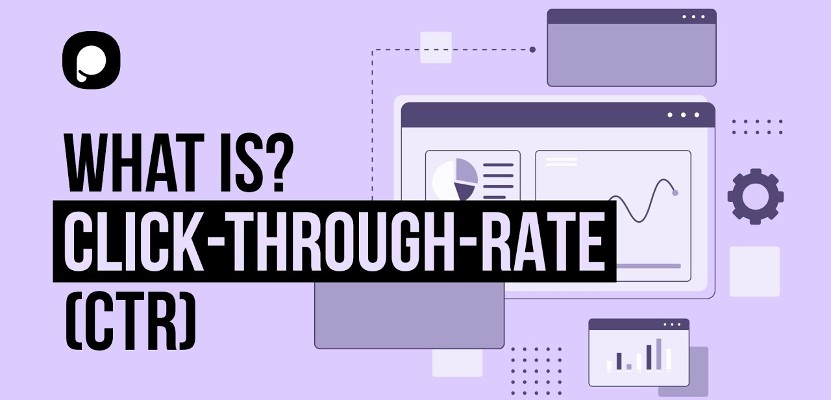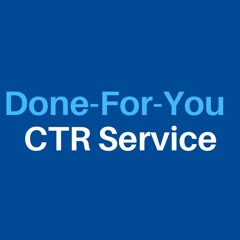Maximize Your Brand's Exposure With Strategic CTR Manipulation Press Release
Wiki Article
The Art and Scientific Research of CTR Manipulation Explained
The manipulation of Click-Through Rate (CTR) is a nuanced discipline that marries emotional understandings with logical rigor, essential for driving user engagement in a competitive electronic landscape. As we discover this detailed balance, it comes to be noticeable that the effects of CTR adjustment prolong far beyond mere numbers, prompting a better exam of its more comprehensive influence.Recognizing Click-Through Price
Click-through price (CTR) is an important metric for reviewing the efficiency of electronic advertising projects. Recognizing CTR is essential for marketing professionals intending to enhance their methods and boost customer involvement.CTR is calculated using the formula: (Complete Clicks/ Total Impacts) x 100. This straightforward computation permits online marketers to analyze the performance of different electronic assets, such as email projects, social media messages, or pay-per-click promotions - LinkDaddy CTR Manipulation. Keeping track of CTR assists recognize trends, allowing data-driven choices to improve web content and targeting strategies
It is essential to keep in mind that while a high CTR is preferable, it should not be the sole focus. A detailed evaluation needs to also consider other metrics, such as conversion price and roi (ROI), to gauge overall campaign success. By analyzing and understanding CTR, online marketers can efficiently improve their electronic advertising and marketing initiatives, ultimately leading to improved company results.
Mental Triggers for Interaction
To successfully drive individual interaction, online marketers must touch right into different mental triggers that influence decision-making and behavior. Recognizing these triggers can improve the effectiveness of advertising and marketing methods and enhance click-through prices (CTR)
 One popular trigger is the principle of shortage, which recommends that minimal availability can increase viewed worth. They are much more most likely to act promptly to avoid missing out when users believe an offer is time-sensitive or uncommon. Similarly, the concept of social proof-- where individuals want to others' actions to lead their very own-- can significantly influence engagement. Highlighting testimonials, individual evaluations, or showcasing prominent products can create a sense of trust and encourage individuals to involve.
One popular trigger is the principle of shortage, which recommends that minimal availability can increase viewed worth. They are much more most likely to act promptly to avoid missing out when users believe an offer is time-sensitive or uncommon. Similarly, the concept of social proof-- where individuals want to others' actions to lead their very own-- can significantly influence engagement. Highlighting testimonials, individual evaluations, or showcasing prominent products can create a sense of trust and encourage individuals to involve.Another crucial element is using psychological allures. Web content that stimulates solid emotions, whether delight, urgency, or interest, can urge individuals to click. Additionally, the principle of reciprocity, where individuals feel obligated to return favors, can be effective; offering something useful completely free, such as an insightful resource, can tempt users to involve even more.
Techniques for Effective CTR Adjustment
Employing targeted methods for reliable CTR manipulation entails a tactical mix of design components, messaging, and audience understanding. One fundamental method is using engaging headings that evoke inquisitiveness or necessity. Headlines need to be clear, succinct, and aligned with the audience's rate of interests to record attention promptly. In addition, making use of top notch visuals can dramatically improve CTR. Images need to be engaging and pertinent, as they can produce a psychological link, prompting customers to click with. Incorporating contrasting shades for call-to-action buttons can additionally attract attention and rise click rates.
In addition, making use of top notch visuals can dramatically improve CTR. Images need to be engaging and pertinent, as they can produce a psychological link, prompting customers to click with. Incorporating contrasting shades for call-to-action buttons can additionally attract attention and rise click rates.An additional efficient approach is A/B screening different components of your content, such as duplicate variations and format designs - GMB CTR Manipulation. This repetitive process permits marketing professionals to identify which elements resonate most with their audience
Furthermore, customization plays a crucial function; tailoring material based upon user habits and choices can result in greater engagement. Crafting messages that attend to specific pain factors or needs improves importance and encourages clicks.
Last but not least, ensuring that touchdown pages are enhanced for smart phones is necessary, as a significant portion of individuals surf on smartphones. These techniques, when carried out attentively, can lead to substantial enhancements in CTR and total project effectiveness.
Analyzing Data for Better Outcomes
How can information analysis change your CTR adjustment approaches? The application of durable information analysis techniques can considerably enhance the performance of your click-through price (CTR) control efforts.Moreover, leveraging A/B screening results gives understandings into which variations of your web content return higher CTRs. By continuously repeating on these searchings for, you can fine-tune your approach, ensuring that each item of material is strategically crafted to capture focus. Furthermore, employing logical next page tools to check time invested on pages and bounce prices can assist you understand the components that add to user involvement.
Moreover, segmenting your data based upon web traffic resources enables you to recognize which networks are most efficient in driving clicks. This insight can route your marketing initiatives toward high-performing systems. Eventually, information analysis is not simply an auxiliary tool; it is a crucial element that can drive impactful CTR approaches, eventually leading to enhanced engagement and conversion rates.
Moral Considerations in CTR Approaches
Navigating the intricacies of CTR manipulation needs a mindful evaluation of honest factors to consider that underpin efficient advertising and marketing techniques. As services strive to enhance click-through prices, they have to balance hostile methods with the stability of their messaging. Deceptive users via deceitful techniques, such as clickbait or false advertising and marketing, not just erodes consumer depend on yet can also result in reputational damages and lawful effects.Ethically sound CTR approaches focus on transparency and accuracy. Marketers should make certain that the web content provided aligns with user assumptions and gives authentic value.
In addition, moral considerations extend to information personal privacy. As online marketers analyze customer habits to optimize CTR, they have to comply with policies and respect customer legal rights regarding information usage. By prioritizing moral requirements in CTR manipulation, organizations can cultivate a sustainable advertising and marketing atmosphere that profits both the organization and its audience. Eventually, ethical factors to consider are not merely a conformity issue yet an essential aspect of liable marketing.
Verdict
To conclude, the art and scientific research of Click-Through Price (CTR) manipulation include a complex approach, integrating mental triggers, strategic techniques, and durable information analysis. While improving customer engagement stays a main purpose, ethical considerations need to lead these techniques to make sure openness and foster trust. Balancing effective CTR manipulation with adherence to personal privacy policies is special info essential for lasting engagement, inevitably lining up advertising and marketing techniques with user expectations and promoting a positive digital environment.The manipulation of Click-Through Rate (CTR) is a nuanced discipline that weds mental understandings with analytical rigor, important for driving user engagement in a competitive digital landscape. Understanding CTR is important for online marketers aiming to optimize their techniques and click here to read enhance user engagement. The application of robust data analysis techniques can considerably enhance the effectiveness of your click-through price (CTR) control initiatives. As marketing professionals examine individual habits to optimize CTR, they must stick to laws and regard consumer legal rights concerning information use. Balancing effective CTR manipulation with adherence to personal privacy policies is important for lasting interaction, eventually aligning advertising and marketing techniques with individual expectations and advertising a positive digital setting.
Report this wiki page